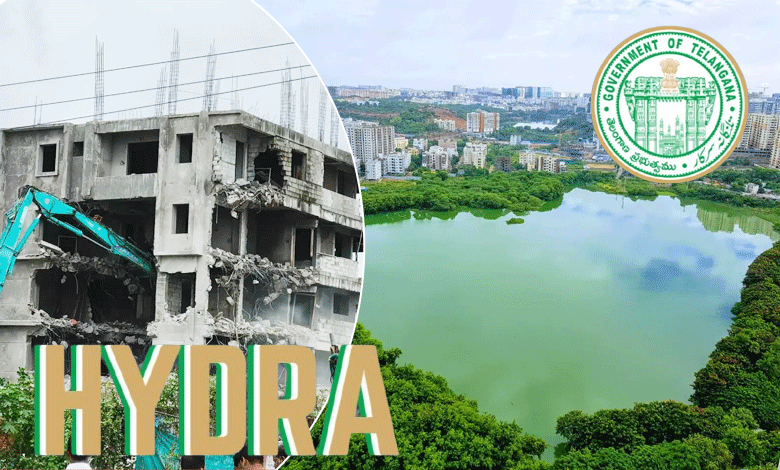HYDRA: Reality, Myth, Purpose, and Legal Status
Following this, the government took action, with Chief Minister A Revanth Reddy emphasizing the need for the development of the Musi River.

MA Mujeeb
Advocate, Telangana High Court
In recent days, the term “Hydra” has become a prominent topic in the minds and discussions of the people of Telangana. It is a word that has instilled a sense of fear in many. The Chief Minister presented the government’s plans regarding Hydra in the assembly session, highlighting its significance. In his one-hour speech, he emphasized how various rulers, from the establishment of Hyderabad to the era of Quli Qutb Shah, have contributed to the city’s development. The construction of landmarks like Charminar, Gulzar Houz, the stone bridge, Lad Bazaar, and various bridges over the Musi River, as well as the development of the new city, Cyberabad, the Hi-Tech City, and the airport, are all achievements of previous governments that have brought international recognition to Hyderabad.
Whether during the Nizam’s rule, the united Andhra governments, or the rulers after the formation of Telangana, each has played its role in the city’s development. The current government aims to expand the real Hyderabad through Hydra, encompassing various municipalities, municipal corporations, and gram panchayats, addressing the expectations of all community members and guiding the city’s development in a new direction.
Today, Hyderabad can be divided into two areas: the city within the Outer Ring Road and the regions outside of it.
Historical Context of Water Bodies in Hyderabad
During the era of the Nizam, there were approximately six thousand lakes and ponds. According to government sources, records from the Nizam’s period detail these water bodies. In the 1990s, government policies allowed the conversion of lakes or ponds with an area of less than ten acres into colonies. Consequently, about three thousand lakes and ponds were filled. A recent survey under the Hyderabad Metropolitan Authority has identified around 2,500 land parcels across seven districts, revealing that 60% of the lakes and ponds in Hyderabad have been encroached upon. The High Court and the Supreme Court of the state have expressed concern over these encroachments, warning the government that if the lakes and ponds are not protected, officials may be summoned to court.
Following this, the government took action, with Chief Minister A Revanth Reddy emphasizing the need for the development of the Musi River. Funding for the river’s development and measures to free its course from encroachments are steps the government is initiating. The Musi River flows from Ananthagiri Hills and merges into Osman Sagar and Himayat Sagar, which have historically served as sources of drinking water.
To restore the Musi River, it is crucial to refill Osman Sagar and Himayat Sagar and eliminate all encroachments along the Musi River from Ananthagiri Hills. Many prominent politicians and wealthy individuals have constructed farmhouses and residences around these reservoirs, and it is essential to remove these encroachments. Sources indicate that these farmhouses are discharging their drainage water into the reservoirs, highlighting the urgent need for the protection of lakes, rivers, and government lands. Water bodies play a crucial role in urban sustainability and quality of life.
The presence of these lakes and ponds increases groundwater levels and reduces pollution. It is essential to recognize that construction around lakes and ponds is illegal. First, we must understand what FTL (Floodplain Transfer Land) is. FTL refers to the full tank level of any lake or pond, indicating the boundary when the water fills the lake. Any construction within this FTL boundary is illegal, and there is also a 30-meter buffer zone beyond the FTL where construction is prohibited. Beyond this, there is a 100-meter recreational zone where limited construction may be allowed, followed by a 1,000-meter zone with additional restrictions. Any construction within these limits is deemed illegal, and the government has the authority to demolish such unauthorized structures.
The key question is how Hydra can help prevent these illegal constructions and reclaim lakes, streams, and government lands. The Telangana government has issued G.O.M.S. No. 99 dated July 19, 2024, defining a core urban region that includes GHMC (Greater Hyderabad Municipal Corporation), Ranga Reddy, Medchal, Malkajgiri, and Sangareddy. Recognizing the need for an effective agency to manage this region, Hydra was established to oversee the removal of encroachments from parks, layouts, playgrounds, lakes, streams, roads, carriageways, and footpaths. Hydra will collaborate with GHMC, municipalities, HMDA (Hyderabad Metropolitan Development Authority), revenue, and other departments.
Additionally, Hydra will monitor all unauthorized constructions and projects, providing regular updates to the public. The establishment of a dedicated police station for Hydra has also been proposed, allowing action against officials who grant permissions for illegal constructions. The governing body of Hydra will be chaired by the Chief Minister, with other ministers and senior police officials as members. The Commissioner of Hydra will serve as a member and convener of this governing body.
Since its establishment, Hydra has already undertaken demolition activities in some critical areas and successfully halted illegal constructions on several lakes. However, the Telangana High Court has stated that regardless of Hydra’s objectives, it must adhere to the principles of natural justice. Prior notice must be given before any action, and constructions deemed illegal should only be dealt with after providing an opportunity for hearing. Citizens have the right to approach the courts if they feel that Hydra’s actions are biased. It is our responsibility as responsible citizens to ensure the protection of lakes, ponds, and government lands.
It is vital to emphasize that all actions taken by Hydra must be within the legal framework, ensuring transparency in every matter. A uniform policy implementation is crucial. Hydra should not be used as a political tool for vengeance. To maintain the purpose and mission of Hydra, it is essential to take sincere steps towards developing Hyderabad as a beautiful and internationally recognized city.
